| | | Mathison Museum of Natural History |  |
|
+16Megaptera Taos George lucky luke Jill Saarlooswolfhound landrover Joliezac Caracal pipsxlch Bonnie Pardofelis Kikimalou rogerpgvg Roger bmathison1972 20 posters | |
| Author | Message |
|---|
bmathison1972
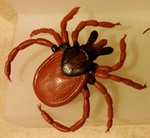
Country/State : Salt Lake City, UT
Age : 52
Joined : 2010-04-13
Posts : 6298
 |  Subject: Re: Mathison Museum of Natural History Subject: Re: Mathison Museum of Natural History  Sat Dec 24, 2022 2:22 pm Sat Dec 24, 2022 2:22 pm | |
| Species: Cyclommatus metallifer (Boisduval, 1835) About the Figure: Manufacturer: F-toys Series: Encyclopedia of Insects Vol. 3 Year of Production: 2008 Size/Scale: Body length (including mandibles) 6.1 cm, within scale 1:1 Frequency of species in toy/figure form (at time of posting): Rare Miscellaneous Notes: This is the third species of Cyclommatus we've seen in the Museum. While none of the Cyclommatus species are commonly made, this might be the best represented species in toy/figure form. I am aware of six figures, by Bandai (3x), DeAgostini, Epoch, and F-toys (I five of them, having only one of the two color forms produced by Bandai for the Diversity of Life on Earth line). About the Animal: Geographic distribution: Indonesia Habitat: Tropical and subtropical broadleaf forests Diet: Larvae feed in decaying logs; adults feed on tree sap, flowers, and overripe fruit IUCN Status (at time of posting): Not Evaluated Miscellaneous Notes: There are currently six recognized subspecies of C. metallifer, all occurring on various Indonesian islands: C. m. metallifer (Sulawesi); C. m. aenomicans (Bachan, Halmahera, Kasiruta, and Morotai Islands in the North Moluccas Archipelago); C. m. finae (Peleng, Banggai, and Bangkulu Islands in the Banggai Archipelago); C. m. isogaii (Thaliabu and Mangole Islands in the Sula Archipelago); C. m. sangirensis (Sangihe Island in the Sangir Archipelago); C. m. butoensis (Buton Island). [You must be registered and logged in to see this image.] |
|   | | Caracal
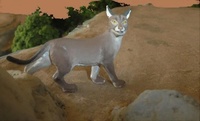
Country/State : France
Age : 65
Joined : 2018-10-24
Posts : 6966
 | |   | | bmathison1972

Country/State : Salt Lake City, UT
Age : 52
Joined : 2010-04-13
Posts : 6298
 |  Subject: Re: Mathison Museum of Natural History Subject: Re: Mathison Museum of Natural History  Sun Dec 25, 2022 2:01 pm Sun Dec 25, 2022 2:01 pm | |
| Species: Gorgasia preclara Böhlke & Randall, 1981 Common name(s): splendid garden eel About the Figure: Manufacturer: Epoch Series: Earth Life Journey Year of Production: Unknown Size/Scale: Total figure height 5.3 cm. Scale difficult to calculate because the entire animal isn't complete, but using diameter as a metric (n=0.5 cm), scale comes to approximately 1:2 Frequency of species in toy/figure form (at time of posting): Rare Miscellaneous Notes: The fish is removable from its tube, but is not complete. This presentation is technically not accurate, as the entrance to tubes are usually flush with flat sand, but it was probably designed this way to give the base sufficient depth to securely hold the fish. Koro Koro and Eikoh also made this species, but both in a diorama-style displays alongside the spotted garden eel ( Heteroconger hassi). I initially had the Eikoh version, but I really wanted the species separate. In 2019 Ikimon released a set of four species of garden eels (including G. preclara) displayed in cube-like bases that would move when a cog was turned on the side of the base. About the Animal: Geographic distribution: Indo-West Pacific Habitat: Benthic; in sandy areas at depths of 18-75 meters Diet: Drifting plankton IUCN Status (at time of posting): Least Concern Miscellaneous Notes: Gorgasia preclara lives in a buried tube in the sand, either alone or in groups; some of the larger groups can have upwards of over 1,000 individual eels! Groups may be mixed with other species, including the spotted garden eel ( Heteroconger hassi). Burrows are usually closer in proximity to one another during the breeding season, but conflicts may arise if the burrows of two males are too close together. [You must be registered and logged in to see this image.] |
|   | | Caracal

Country/State : France
Age : 65
Joined : 2018-10-24
Posts : 6966
 | |   | | widukind
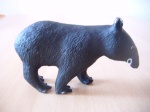
Country/State : Germany
Age : 48
Joined : 2010-12-30
Posts : 44488
 |  Subject: Re: Mathison Museum of Natural History Subject: Re: Mathison Museum of Natural History  Mon Dec 26, 2022 10:16 am Mon Dec 26, 2022 10:16 am | |
| |
|   | | bmathison1972

Country/State : Salt Lake City, UT
Age : 52
Joined : 2010-04-13
Posts : 6298
 |  Subject: Re: Mathison Museum of Natural History Subject: Re: Mathison Museum of Natural History  Mon Dec 26, 2022 2:13 pm Mon Dec 26, 2022 2:13 pm | |
| Species: Lampropeltis californiae (de Blainville, 1835) Common name(s): California kingsnake About the Figure: Manufacturer: Wing Mau Series: Snakes Year of Production: unknown Size/Scale: Figure 15.0 cm long. Measured along midline, body length 24.5 cm for a scale of 1:3-1:5 for an average specimen or 1:8 for a maximum-sized specimen Frequency of species in toy/figure form (at time of posting): Very rare (see below) Miscellaneous Notes: This figure is stamped 'desert kingsnake' on the underside. While the desert kingsnake ( L. splendida) can have alternating bands of brown on yellow, the bands are usually broken on the sides of the body and intermixed with dark flecks. Bold contrasting bands of brown and yellow like this are more inline with L. californiae. It should be pointed out that when this figure was produced (probably mid-late 1990s), L. californiae and L. splendida were both considered subspecies of the common kingsnake, L. getula, so it is possible it was modeled after a specimen of what is now known as the California kingsnake. Both species occur in the desert Southwest of North America, although L. californiae appears to occur in the Mohave and Sonoran Deserts while L. splendida occurs in the Chihuahuan Desert, with some overlap in southeastern Arizona where the habitats meet. Wing Mau also produced this figure for Club Earth for their Snakes to Go collection, and that figure appears to be painted after the grey-banded kingsnake ( L. alterna), Mexican kingsnake ( L. mexicana), or similar (again, when these figures were produced, L. alterna was a subspecies of L. mexicana). I do not have the Club Earth figure, so I do not know if it is stamped with a different name or if it too is stamped 'desert kingsnake'. I am also not sure if additional color variants exist as well. About the Animal: Geographic distribution: Western North America (west of the Continental Divide, from southern Oregon to Baja California and Sonora) Habitat: Woodlands, chaparral, grasslands, deserts, marshes, suburban areas Diet: Reptiles (including other snakes), rodents, small birds, amphibians IUCN Status (at time of posting): Least Concern Miscellaneous Notes: Lampropeltis californiae, like other kingsnakes, is known for its affinity for eating other snakes. It is resistant to pit viper venom, allowing it to be a predator on rattlesnakes, such as the western diamondback rattlesnake ( Crotalus atrox) it shares part of its range with. [You must be registered and logged in to see this image.]
Last edited by bmathison1972 on Mon Dec 26, 2022 2:50 pm; edited 1 time in total |
|   | | Caracal

Country/State : France
Age : 65
Joined : 2018-10-24
Posts : 6966
 |  Subject: Re: Mathison Museum of Natural History Subject: Re: Mathison Museum of Natural History  Mon Dec 26, 2022 2:37 pm Mon Dec 26, 2022 2:37 pm | |
| Are Lampropeltis venomous?  |
|   | | bmathison1972

Country/State : Salt Lake City, UT
Age : 52
Joined : 2010-04-13
Posts : 6298
 |  Subject: Re: Mathison Museum of Natural History Subject: Re: Mathison Museum of Natural History  Mon Dec 26, 2022 2:49 pm Mon Dec 26, 2022 2:49 pm | |
| - Caracal wrote:
- Are Lampropeltis venomous?
 No, they are not |
|   | | bmathison1972

Country/State : Salt Lake City, UT
Age : 52
Joined : 2010-04-13
Posts : 6298
 |  Subject: Re: Mathison Museum of Natural History Subject: Re: Mathison Museum of Natural History  Tue Dec 27, 2022 1:21 pm Tue Dec 27, 2022 1:21 pm | |
| Species: Struthio camelus Linnaeus, 1758 Common name(s): common ostrich About the Figure: Manufacturer: CollectA Series: Wildlife Year of Production: 2011 Size/Scale: Adult 9.5 tall for a scale of 1:17-1:21. Chick 4.0 cm tall and within relative scale with the adult (although probably a bit on the large size, depending on the age of the chick) Frequency of species in toy/figure form (at time of posting): Very common Miscellaneous Notes: CollectA also released a 'sitting' ostrich chick in 2011. The adult, like most ostrich figures, is painted after a male. There is no shortage of ostrich figures. Other nice examples are the 2010 version by Safari Ltd. and the 2015 version by Schleich. About the Animal: Geographic distribution: Sub-Saharan Africa (exclusive of forested areas and the Horn of Africa); naturalized in Australia Habitat: Savanna, semi-deserts, deserts Diet: Primarily seeds, grasses, flowers, fruit; occasionally carrion and invertebrates IUCN Status (at time of posting): Least Concern Miscellaneous Notes: There are three extant species of S. camelus. The North African ostrich ( S. c. camelus) occurs across the Sahel separating the Sahara Desert from the forested regions of sub-Saharan Africa. The South African ostrich ( C. s. austalis) occurs in southern Africa south of the Zambezi and Cunene Rivers. The Masai ostrich ( C. s. massaicus) occurs in East Africa, south of the Sahel and Horn of Africa. An extinct subspecies, the Arabian ostrich ( C. s. syriacus) inhabited the Arabian Peninsula, Syria, and Iraq; it became extinct around 1966. In 2014, the Somali ostrich ( C. molybdophanes) was elevated to species status based on molecular data that suggests the East African Rift has served as a geographic barrier to isolate it from the nominate subspecies for a sufficient enough time to warrant speciation. Ecological and behavioral differences have kept it genetically distinct from the Masai populations to the south. Molecular studies also suggest that the Somali ostrich is phylogenetically the most distinct, and diverged from a common ancestor with S. camelus approximately 3.6-4.1 million years ago. [You must be registered and logged in to see this image.] |
|   | | widukind

Country/State : Germany
Age : 48
Joined : 2010-12-30
Posts : 44488
 |  Subject: Re: Mathison Museum of Natural History Subject: Re: Mathison Museum of Natural History  Tue Dec 27, 2022 1:53 pm Tue Dec 27, 2022 1:53 pm | |
| |
|   | | Roger
Admin
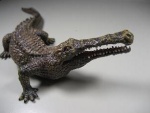
Country/State : Portugal
Age : 49
Joined : 2010-08-20
Posts : 35076
 |  Subject: Re: Mathison Museum of Natural History Subject: Re: Mathison Museum of Natural History  Tue Dec 27, 2022 4:19 pm Tue Dec 27, 2022 4:19 pm | |
| The shortage is about females. All these chicks only have male projenitors. Ostriches are the most common wild birds in this hobby. I think a ostrich couple could be a good idea for a Schleich set either Farm or Wildlife and it is good to recall that Mojö Fun never released a single one. Maybe 2023 if they're releasing figures at all.  |
|   | | lucky luke
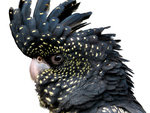
Country/State : FRANCE Saint-Louis
Age : 62
Joined : 2010-07-17
Posts : 6027
 |  Subject: Re: Mathison Museum of Natural History Subject: Re: Mathison Museum of Natural History  Tue Dec 27, 2022 4:48 pm Tue Dec 27, 2022 4:48 pm | |
| |
|   | | bmathison1972

Country/State : Salt Lake City, UT
Age : 52
Joined : 2010-04-13
Posts : 6298
 |  Subject: Re: Mathison Museum of Natural History Subject: Re: Mathison Museum of Natural History  Wed Dec 28, 2022 12:52 pm Wed Dec 28, 2022 12:52 pm | |
| Species: † Urile perspicillatus (Pallas, 1811) Common name(s): Pallas's cormorant; spectacled cormorant About the Figure: Manufacturer: Kaiyodo Series: Capsule Q Museum - Zukon Extinction Year of Production: 2022 Size/Scale: Total figure height 6.5 cm. Scale difficult to calculate, but using the ulna as a metric (n=1.7 cm), scale comes to approximately 1:11.5 Frequency of species in toy/figure form (at time of posting): Very rare Miscellaneous Notes: Some assembly is required and the bird is removable from its base (albeit leaving broad pegs under the feet). Cadbury also produced this species for the Yowies Forgotten Friends line. About the Animal: Geographic distribution: Russia (Bering Island) and Japan (Honshu); probably other islands in the Bering Sea or northern Japan Habitat: Presumably rocky marine coasts. Diet: Fish IUCN Status (at time of posting): Extinct Miscellaneous Notes: Urile perspicillatus went extinct around 1852. The specific cause of its extinction is unknown but was probably attributed to hunting for food and feathers. Human activity drastically increased on the island in the mid 1700s due to profitable whaling and hunting of sea otters and Arctic foxes, and the bird's population declined rapidly shortly thereafter. In 2018, Pleistocene fossils of U. perspicillatus were found in Honshu, Japan, marking the first pre-Holocene record of this species and the first record outside of Bering Island. [You must be registered and logged in to see this image.] |
|   | | Roger
Admin

Country/State : Portugal
Age : 49
Joined : 2010-08-20
Posts : 35076
 |  Subject: Re: Mathison Museum of Natural History Subject: Re: Mathison Museum of Natural History  Wed Dec 28, 2022 4:42 pm Wed Dec 28, 2022 4:42 pm | |
| An interesting order of birds which has no very popular species. It is weird we don't have more figures of magnificent frigatebirds and the funny blue-footed booby is a kind of little star among these. Fortunately, some other interesting species can be found like this one. ------- Since too many posts were made, this topic has been divided automatically. You can find the rest of this topic here : [You must be registered and logged in to see this link.] |
|   | | Sponsored content
 |  Subject: Re: Mathison Museum of Natural History Subject: Re: Mathison Museum of Natural History  | |
| |
|   | | | | Mathison Museum of Natural History |  |
|
Similar topics |  |
|
| | Permissions in this forum: | You cannot reply to topics in this forum
| |
| |
| |
